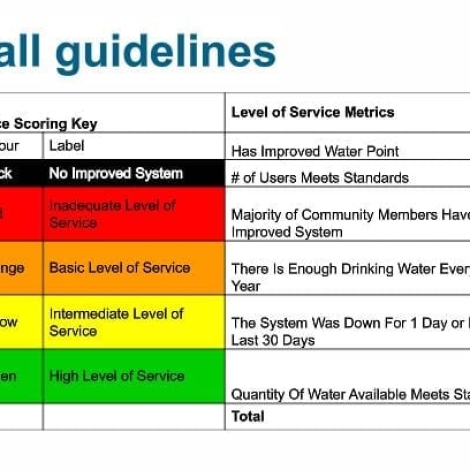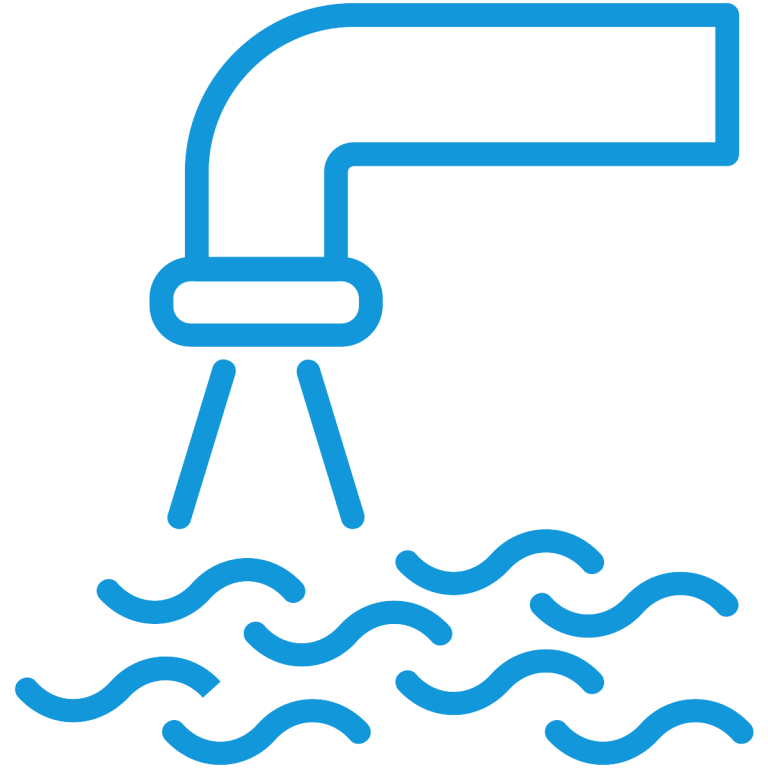One hour was not enough time to field your questions from our most popular webinar to date, Future-Proofing Water Systems in Developing Countries. So, we chose a sample of interesting questions and put them to the webinar presenter Susan Davis, who heads Improve International. Attendees asked her about the problem of charging people who are too poor to pay for water, why gender matters in community management groups, what features do successful water systems share, and beer. Davis gave in-depth answers to every one of them and provides a host of resources.
If you missed the webinar, please see a recording of it on our interactive platform at ON24, or on our YouTube channel. You’ll see Davis’ fast-paced and fascinating presentation followed by her answers to as many questions as she could take before time ran out. Here is the rest of the discussion.
Walt Walker: How’ve you addressed income inequities/unbalances throughout a community in regards to a system fee collection? The households that can’t afford it, are likely the ones that most need proper water supply/sanitation.
SD: This is a tough one. I have visited community-managed water systems in rural areas where the water committee had waived the tariffs for those they deemed unable to pay – for example, widows or children-led households. It was not clear, however, that they had set water tariffs / fees based on the actual costs of running the system, which as discussed extensively by IRC is a major contributor to poor water services. Overall the poor (at least in urban areas) are paying more for water than the rich. Studies have shown that prices of alternative sources of drinking water tend to be much higher than the price of water provided by utilities. Water provided by carters and tanker trucks is more expensive than that provided by point-source vendors, which in turn is more expensive than private or public networks.
I think the best way for communities to deal with this is a) to understand the full life-cycle costs of their particular system, the number of users who can pay and set tariffs that will cover those costs and b) have very clear criteria in a participatory way with the water users about who is considered unable to pay. Below are a couple resources that might be helpful.
Providing water to the urban poor in developing countries: the role of tariffs and subsidies
Water and Sanitation Tariffs for the Poor: Guidance Notes
Ahmed Albayoumy: Why wouldn’t there be organizations that exist purely to provide service and maintenance, rather than increasing responsibilities on current donors and service providers?
SD: A service provider is by definition responsible for providing service, which means managing funds, ensuring water is flowing and meets standards, performing or contracting maintenance and ensuring repairs are made, etc. The point of the webinar was that many water projects rely on under-resourced communities to manage their own water systems with their own funds. In some countries, the local government entity is supposed to help them with major repairs and/or technical advice, but they are also under-resourced.
This model has proven in many countries to be insufficient. So, is it responsible for donors and implementing organizations to continue to simply build water systems without thinking about how the services will be sustained, knowing they will likely fail, or is it better for them to try to also facilitate ongoing services? The latter can be done by supporting local governments, helping to link or stimulate private sector operations, maintenance or spare parts supply to rural service providers, or in other ways.
Of course, in my mind at least, the ultimate goal is for water services to be sustained for all citizens, without external donors. That won’t happen with a project mindset and an access-only focus.
Will Peterson: Are there any specific traits (i.e. implementation practices, preventative maintenance, location, project size, government involvement) that are consistent among the 60 percent of projects that are successful long term?
SD: Just to clarify, 60 percent is a rough global average of water systems that are functional on the day of the visit. Because there are not consistent data sets on services over time, it is hard to know what leads to sustained services.
There are many hypotheses, however, captured in numerous sustainability frameworks, a few of which I’ve listed in this blog. Also, I suggest you look at the Tim Foster study, which I’ve summarized and provided the link for in this blog.
Stephen Sufka: How much do for-profit corporations engage in these efforts and factor in to innovation in the technology and service models?
SD: In developing countries, I believe that the larger corporations are focused on service provision or maintenance for urban or small town utilities. In rural areas, there are certainly small businesses or individual professionals who sell parts and provide maintenance. They are often challenged by economies of scale, difficulties reaching remote villages on bad roads, and poor marketing. There are examples of ICT, renewable energy, water treatment, and financial applications that are interesting options for for-profit engagement.
A few related resources are below:
Private Sector Participation in Water and Sanitation for Developing Countries
Operation and Maintenance of rural water services in Kenya: Suitable solutions
Using mobile phones to enhance functionality of rural water sources
Ravi Prakash: Why is gender balance important to maintenance? (slide 19)
SD: There are lots of resources on this. As a start I’ll point you to Gender and Water, by the UN Department of Economic and Social Affairs.
Interestingly, some studies show a statistical connection between women on management committees and water system functionality and some don’t. In many developing countries women and girls are responsible for collecting and using water for purposes including sanitation and health, such as through the production of food, care of animals, cleaning and waste disposal. However, it is often men who make decisions about water resources management and development at both local and national levels. Even though women have a wealth of knowledge on the subject, it is often overlooked in the formulation of projects due to their lack of inclusion in water governance processes.
A general recommendation that emerges across the resources is that using a gender analysis is crucial in understanding the impact that water-focused policies, programs and projects have on women, men, boys and girls. It is then vital to incorporate these views in the planning and design stage of any water-focused project or policy. And following on from this, it is important to directly involve both women and men at all levels of water governance and management.
Paige Peters: Any particular component of water systems (pumps, valves, etc.) that are more prone to failure? Some technology that is not as well-received in the communities?
SD: There are so-called “fast-moving” parts that need to be replaced often, such as O-rings, U seals, pump handles, washers, flappers, valves, etc.
Regarding technology, one of the best-known failures is the PlayPump. See The Story of PlayPumps: Merry-go-rounds, Water, and Failures in Development Aid.
A great water technology resource is this list of case studies at washtechnology.net. And another is Handpumps: Where Are They Now? A Synthesis of Online Discussions 2012-2014
Sougat Kumar Mandal: You spoke about the unavailability of spare parts in some places. What is the problem in setting up any spare part outlet there by the company?
SD: Retail of hand pump spares parts at a local level is often not economically viable given the number of hand pumps. The fast-moving parts are too cheap, and the expensive parts aren’t needed often enough to be worth stocking.
Community-based management makes developing supply chains difficult because communities are often far from each other, use different technologies, and cannot buy in bulk, among other reasons.
Justin Whiting: What are some specific roles that Engineers can play in making these water systems more sustainable?
SD: Beyond the Resolution Guidelines, I think bringing the engineers’ problem-solving mindset in a holistic way (e.g., systems analysis) could be very helpful.
Michelle Bohrson: When developing an operations and maintenance program for a project that is currently being built, where is the best place to start?
SD: Understanding the market – how many water points, what types of technology, how often do they need to be maintained, what are financially viable models, etc.
Madison Marshall: Do you have any tips on how to train users to know when the system needs to be redone, since normally the time frame is unknown and up to 10 or 20 years in the future?
SD: If by “redone” you mean replace the whole system, I would suggest life-cycle costing exercises and water safety planning.
Zachary Klee: In my studies, I have found that people tend to prefer beer over water. Have you tried to install beer on tap in these communities instead of water pumps? And if so, how does functionality and maintenance costs differ?
SD: Improve International doesn’t install anything, but we also enjoy beer. We all know you need good water to make good beer.
Anthony Giamella: Can you give some examples about communicating to the community and other stakeholders that the responsibilities needed to be changed and negotiated new roles?
SD: Here’s a section from the Resolution Report (references & appendices can be found in the report).
In Kenya, SNV and partners are supporting the design and implementation of various professional management models, which clearly define the role of the private sector, the local authority, and the water management committees in the management of water services in the given geographic area (48).
Appendix I shows an example resolution agreement used by Waterlines in Kenya to provide a match of up to $200 USD per water project to improve the functioning of rainwater catchment systems. Water1st makes an annual contract with each of their local NGO partners; the contract is not just about new construction, but also includes budget for the partner to do follow-up activities with communities (39). EWB has templates of agreements so the community understands what they will be asking them to do and pay for in the long term, along with specific roles and expectations for the NGO partner (57). Because significant investments must be made to rehabilitate old broken water points to make them functional again, Safe Water Network develops public-private partnerships where the mayor’s office would provide a 25-year contract to a private service provider. The contract includes rules and regulations based on the national water code of the country, tariffs, and use and profitability (35).
Paul Gerke: How can ground water depletion be evaluated and assessed?
SD: This is not my area of expertise, but USGS is a good resource. Also, I believe DRI has been looking into these issues in developing countries.



Appreciate the recommendation. Lett me try iit out.